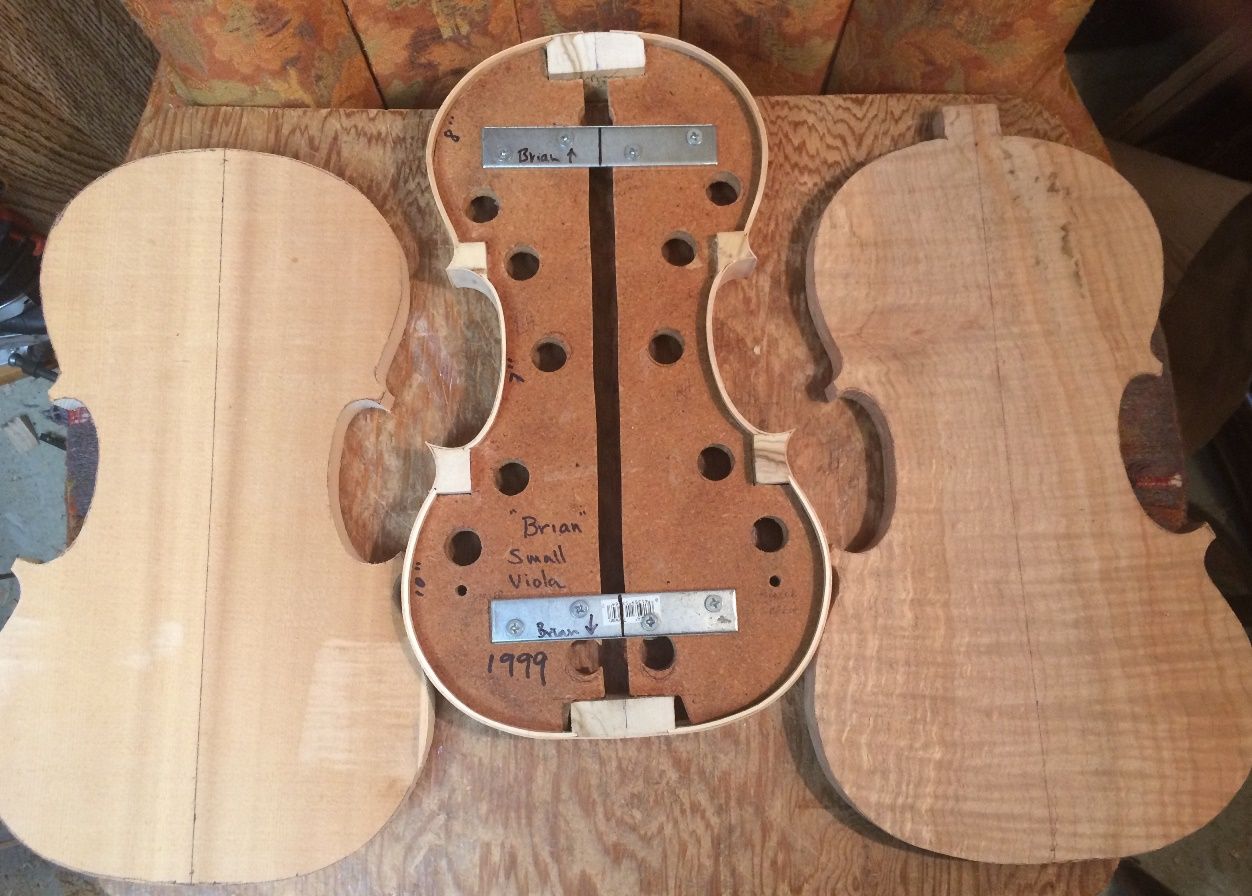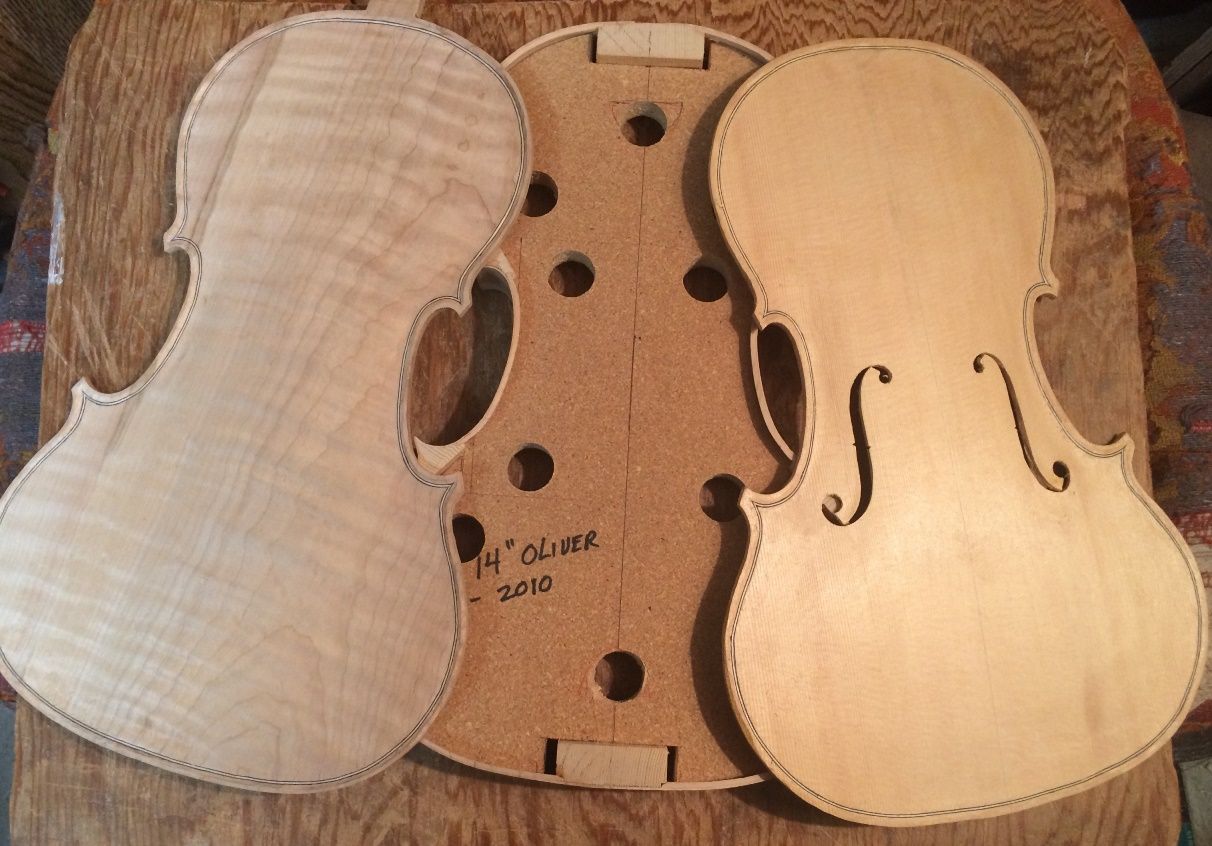New Five-String Fiddle Request!
A client contacted me through this website and asked whether I could build a 5-string fiddle of primarily Oregon woods. (Sure!)
Test-Drive of existing fiddles
We made an appointment and she came for a visit. She played eight of my hand-made instruments (all good fiddles), finally declaring a particular one to be exactly what she wanted, except that she did not care for the look of the one-piece Sitka Spruce top plate. It had very wide grain on the bass side and narrower on the treble side. (It sounds great, but the looks were bothering her.) Soooo…
Custom-made Five-string!
I went into my storage and retrieved a really wild-grained piece of Big Leaf Maple, and two billets of very straight, even-grained Spruce: one of Englemann, and another of Sitka: she chose the Englemann and loved the maple. She wanted an instrument essentially the same as that first one, but without the odd-looking belly grain. (The same model; made on the same mold (form), and sounding just like it, as well.) It will be tough to do, because the one she really likes is already five years old; it has had time to settle, be re-adjusted, and settle again. (Yes, it sounds good!)
Select Woods and a Good Start
So, we went out to one of my other buildings and hand-picked some likely-looking wood for the neck and ribs, and we were ready to do business. She presented a deposit, and I suggested that she take home the one she loved, for the time being, to keep her interest up while waiting for me to complete her personal treasure. She went home happy, and I began sorting willow for blocks, finding my proper templates, and enjoying the prospect of a new five-string fiddle build. I will post follow-ups as they occur.
Thanks for looking.
I will post this over on the Bluefiddles page, as well.



